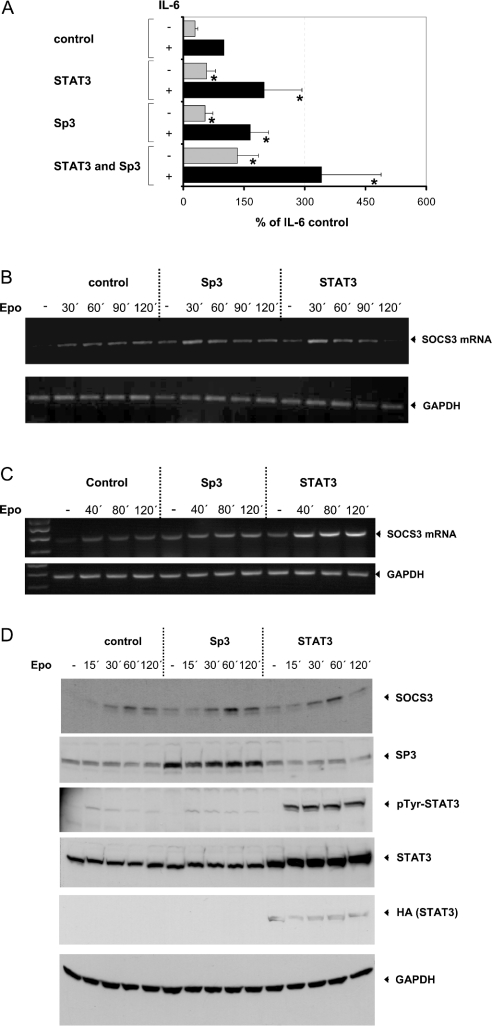Figure 5. Sp3 as well as STAT3 induces basal and IL-6-mediated transcriptional activation of an SOCS3 promoter construct and leads to enhanced expression of SOCS3 protein.
(A) RAW 264.7 cells were co-transfected with a reporter gene construct containing the SOCS3 promoter fused to the firefly luciferase gene and a control plasmid or expression vector for Sp3- or HA-tagged STAT3 as indicated. An expression vector for β-galactosidase was co-transfected for monitoring the transfection efficiency. Cells were stimulated, 2 days after transfection, either with or without IL-6 (300 units/ml) for 16 h as shown. Luciferase activity in cellular extracts of these cells was determined and normalized to β-galactosidase activity as described in the Experimental section. NIH3T3 cells (B, D) and HepG2 cells (C) were co-transfected with an Epo/gp130 receptor chimaera including the extracellular part of the Epo receptor and the transmembrane and cytoplasmic domains of the gp130 signal-transducing receptor subunit of the IL-6 receptor complex and a control plasmid or expression vector for Sp3- or HA-tagged STAT3 as depicted. (B, C) Cells were stimulated with 1 unit/ml Epo for the time periods indicated and total RNA was isolated as described in the Experimental section. Subsequently, total RNA was analysed by RT–PCR as described in the Experimental section using primers specific for SOCS3 (upper panel). For loading control, RT–PCR was repeated using primer pairs specific for GAPDH (lower panel). The optimal number of cycles for each primer pair was determined by real-time PCR. The experiments shown are representative of at least three independent experiments. (D) Cellular extracts were prepared and equal amounts of the protein were separated by SDS/PAGE and analysed by Western blotting with a polyclonal antibody from rabbit specifically raised against SOCS3 (topmost panel). For loading and transfection controls, the membrane was reprobed with an Sp3-specific polyclonal antibody (second panel), an antibody specifically recognizing STAT3 tyrosine-phosphorylated at Tyr-759 (third panel) or a STAT3-specific polyclonal antibody (fourth panel) and an HA- (fifth panel) or GAPDH-specific (bottommost panel) monoclonal antibody. *P<0.05, compared with control experiment.

